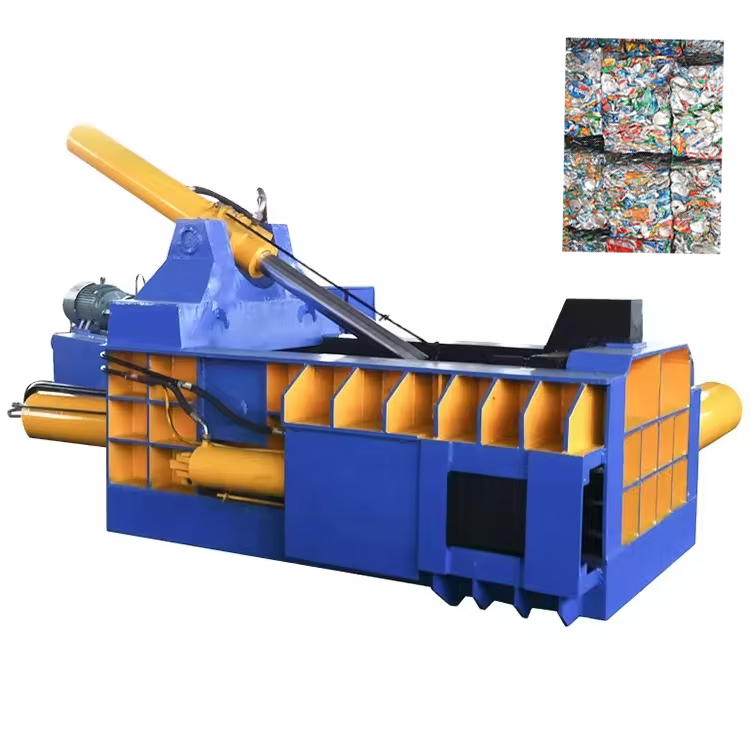Application and importance of compaction baler
Introduction to Baling Presses
A baling press, also known as a baler, is a type of industrial equipment designed to compress loose materials into compact bales for easy handling, storage, and transportation. These machines are commonly used across various industries including recycling centers, manufacturing plants, agriculture, and waste management facilities. The materials processed by baling presses can range from paper, cardboard, textiles, plastics, to agricultural products like hay or straw.

Working Principle of Baling Presses
The operation of a baling press typically involves several key components: a feed hopper, a compression chamber, hydraulic cylinders or mechanical drives, and a tying mechanism.
Feeding: The process begins with feeding the material into the machine through a hopper or chute. Depending on the design, this can be done manually or automatically using conveyor belts.
Compression: Once inside the compression chamber, hydraulic cylinders or mechanical drives apply immense force to compress the material. The pressure applied can vary depending on the model and the material being compressed, but it's often enough to reduce the volume of the material significantly.
Tying: After achieving the desired level of compression, the material is tied off with wire, strapping, or string to maintain its shape. This is typically done using an integrated tying mechanism that wraps around the compressed material and secures it before the next cycle begins.
Ejection: Finally, the compacted bale is ejected from the machine onto a conveyor belt or pallet for further processing, shipping, or storage.
Baling presses (balers) are widely used in multiple industries due to their ability to effectively reduce the volume of materials, making storage and transportation more manageable. Below are some of the primary industries where they find application:
Recycling Industry:
- Recycling of waste paper and cardboard
- Recovery of plastic bottles, films, and other plastic products
- Compaction and bundling of metal scrap (such as aluminum cans, metal chips, etc.)
- Management of textile waste (such as fabric scraps)
Agriculture:
- Baling of hay and straw
- Handling of crop waste (such as corn husks, rice hulls, etc.)
Manufacturing:
- Processing of various wastes generated during production
- Compression of packaging materials (such as foam plastics, wrapping paper, etc.)
Logistics and Warehousing:
- Reducing storage space requirements
- Improving the efficiency of goods transportation
Textile Industry:
- Handling of waste yarn and fabric scraps
Food Industry:
- Management of non-food by-products (for example, fruit peels, vegetable waste, etc.)
Waste Management and Environmental Protection Industries:
- Preliminary treatment of municipal solid waste
- Pre-processing of hazardous waste (in specially designed equipment)
By utilizing baling presses, these industries can more effectively manage their waste, reduce environmental pollution, and potentially gain economic benefits, such as through the sale of recyclable materials. Additionally, these machines help improve operational safety, reduce clutter in the workplace, and simplify cleanup processes.
-
 Trommel screenTrommel screen, also known as drum screens, are widely used in various industries for sorting and separating materials.Get Quote
Trommel screenTrommel screen, also known as drum screens, are widely used in various industries for sorting and separating materials.Get Quote -
 Crop straw double shaft shreddApplications:Biomass Energy Production: Shredded straw can be used as a feedstock for bioenergy plants to produce electricity or heat.Livestock Feed: Reduced-si...Get Quote
Crop straw double shaft shreddApplications:Biomass Energy Production: Shredded straw can be used as a feedstock for bioenergy plants to produce electricity or heat.Livestock Feed: Reduced-si...Get Quote -
 Zhongcheng Air Drum SeparatorAir drum separators effectively separate lightweight materials (e.g., plastics, paper) from heavier materials (e.g., metals, glass). This high efficiency is cru...Get Quote
Zhongcheng Air Drum SeparatorAir drum separators effectively separate lightweight materials (e.g., plastics, paper) from heavier materials (e.g., metals, glass). This high efficiency is cru...Get Quote
-
2024-06-05Waste Trommel And Copmost TrommelHowever, it's important to choose the right type of drum screen based on your specific needs. Today, Kevin from Zhongcheng Company will explain the differences...
-
2023-01-12Conveyor BeltGarbage conveyor/Trash conveyor belt system is a processing line to classify paper, plastic, metal, glass, and organic matter and realize the recycling of rubb...
-
2024-06-11Optimize Your Waste Management Today with Our Advanced Drum ScreensUnderstanding the Mechanism and Optimization of Drum Screens for Waste Management
-
2023-01-12WindshifterWindshifter (Air Drum Separator ) is the ideal solution for separating all kind of waste types into two fractions, heavy and light. The robust construction and ...
-
2024-04-13Wobbler FeederWobbler feeder is a type of feeding equipment that uses rotating elliptical bars, known as wobblers, to separate materials based on size and type before they re...



